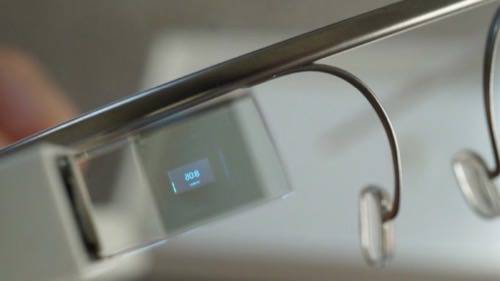
If there’s one thing anyone who’s worn Google’s zany augmented-reality eyewear can agree on, it’s that people are really curious about it.
I’ve been wearing Glass for about four days now, so I have a pretty solid grasp on the essentials of wearing and using it.
I’ve also gotten a perspective on navigating the strange new social waters that wearing on a computer on your face throws you into headlong. So let’s start with the basics and work our way out.
Q: What is Google Glass?
Google Glass is a project born out of Google[x], the company’s “moonshot lab” for top-secret projects. Announced formally last year at the Google I/O developer conference in San Francisco, Google Glass is a wearable computing device. It looks like a futuristic visor worn like eyeglasses and it mimics many functions of a smartphone.
Q: What can Glass do?
Right now, Glass can take photos and videos, get turn-by-turn directions, send and receive texts, make and receive calls, send and receive email, execute Google searches, and share photos and videos via Google+, Google’s social network. With Google Now, a service that tries to predict things you might otherwise search for, Glass suggests nearby locations of interest (brunch spots, for example) and provides a weather forecast. Glass also has some additional capabilities through third-party apps known as “Glassware“, and more of those are popping up every day.
Q: How did you get it?
I attended Google I/O 2012 as press, so I pre-ordered Google Glass then. And yes, I paid $1,500. What can I say? I’m a dyed-in-the-wool early adopter.
Q: What does it feel like?
Once you get used to it, not much. If you wear eyeglasses, it probably feels like that, but maybe even less obtrusive. I tend to forget Glass is there until it announces a new text or event with a quiet chime in my right ear.
Q: What does that sound like? Does everyone else hear the chime?
No, Glass uses a bone-conductive speaker technology, similar to some hearing aids, so only you hear it.
Q: What do you see?
The display on Glass appears above your right eye. It looks like a tiny translucent rectangular screen. In bright sun, the background is almost invisible but the rest of the time it has a grayish background when it isn’t displaying content like photos and videos.
Q: How do you interact with Glass?
The right side of the device is touch-sensitive. You scroll through the interface by swiping a finger forward or back and tapping to select. A downward swipe dismisses whatever is on the screen. It works somewhat like a “Back” button in a browser. You can wake Glass up either by tapping once on the side or by nodding your head upward. You can navigate the interface through touch alone, but many actions require voice interaction as well. Commands beginning with “OK Glass” execute a series of core functions. And since there isn’t any typing, any kind of reply (text, email, etc.) requires voice dictation.
Q: How good is the voice recognition?
Really good. Without ambient noise, my messages rarely have any crossed signals. (Glass even recognized the word “hella” in a text I sent on Sunday. Whoa.) Still, longer messages are ill-advised, because if you mess up you have to start over altogether.
Q: What other Glass apps are out there?
With the New York Times app for Glass, you’ll see headlines pop up periodically and you can choose to have Glass read an excerpt of a story aloud. With the Path app, you can share photos beyond Google+ to your social network on Path. As announced at the SXSW 2013 conference in Austin, Texas, earlier this year, an Evernote app for taking notes and annotating photos is on the way soon. Beyond the Google-promoted apps for Glass, other developers have cooked up plenty of cool stuff, which can be found in “Glassware” directories. There are apps for reading Reddit, the news-discussion site, and for posting messages to Twitter.
Q: Can you really take pictures and video of people without them noticing?
Totally. There is a button that lets you snap a quick photo with Glass. From my experience, no one ever notices the gesture or hears the noise, which is louder in your ear than for anyone around you. People can see the Glass display light up, but that’s the best warning they’re going to get. You can also say “OK Glass, take a picture,” which is a little more obvious.
Q: How does it get online?
Glass can connect to any Wi-Fi network or tether to a smartphone’s mobile network via Bluetooth. It can’t connect to 3G or 4G wireless networks except through a smartphone or mobile-hotspot device.
Q: How do people react?
Like you have a new puppy. Almost everyone I’ve encountered has asked me a million questions and wanted to wear it. Granted, I live in Portland, Oregon, where people are generally pretty open and chatty. Most people here have never seen Glass before in person and they’re excited and curious.
Q: What software is Glass running?
Glass runs a very modified version of Android 4.0, Google’s mobile operating system for smartphones and tablets. Unlike traditional Android, the user interface is all about “cards” which you can select and interact with, primarily by scrolling through them to the left or right.
Q: When can I get it?
Google has stated that it intends to get a non-developer version of Glass out to the public by the end of 2013 for less than $1,500.
Our starter Q&A covers the basics of Google Glass, but we’re curious — what else are you dying to know?









